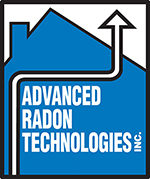Radon Information For:
Home Buyers
Contact Us For A Free Quote
What to Know About Radon When Buying a Home:
Radon testing is becoming more common during Real Estate transactions in the Inland Northwest. In the near future, Radon testing will be completed in virtually all real estate transactions. Radon testing in real estate is far more common in many cities not far from Spokane and Coeur d’ Alene. Portland OR and Butte, MT already conduct radon tests in almost all real estate transactions, and it will happen in Spokane and Coeur d’ Alene in the next few years.
Home Buyers:
Home Buyers should always conduct radon testing prior to purchasing a house, regardless of the age of the home, just completed or 100+ years old and every home in between. In the greater Inland Northwest 60% to 80% of all houses have radon levels above the action level of 4 Pc/L. Zip codes in the Inland Northwest are home to some of the highest radon levels in the United States. Most home inspectors will conduct a radon test for you as part of the home inspection. There is usually an additional fee ($125- $150). This is relatively inexpensive for peace of mind, and protection of your family and investment. It is the recommendation of A.R.T. that buyers either remain in control of repairs to the home, including radon, or at least have a say in who conducts the repairs. Radon, in most of the Western United States, is completely UN REGULATED by the states. This means anyone can claim to be a radon expert! Always have a certified radon mitigation firm, and preferably a certified radon mitigator, install your radon system including a full guarantee to reduce the radon levels below 4 Pc/L. (See links below) Even though most estimates for radon systems can be conducted over the phone or by internet, it is always best to meet the company in person, on site to get a better idea of who and how the system is likely to be installed. Be concerned if they refuse to meet you at the house! Always check for reviews online and ask your Home Inspector or Realtor to ask around their office.
How Does Radon Testing Work?
If you have performed a single radon test in your home, the US EPA recommends a follow up test before fixing or selling your home. Radon levels fluctuate naturally, so it’s important to ensure the previous test results are still an accurate assessment, or if weather conditions have increased the radon level. If you’ve already had a follow up test and you need to reduce the radon levels, you have a number of options.
Hire Advanced Radon Technologies’ professional, licensed radon mitigation specialists. Our techniques for homes, schools, and commercial buildings are straightforward and can be done in one day by a qualified contractor for a typical single family residence.
Radon reduction requires sealing and is done in conjunction with other mitigation steps. Active soil depressurization is a cost-effective and reliable technique for radon reduction. It collects radon from beneath the building before it can enter. Depending upon the design of the building, simple or complex systems are used. Every system draws the radon-laden soil gas from beneath the foundation and exhausts it outside of the building, far away from windows and other openings that it will not reenter.
A plastic pipe is connected to the soil through a hole in a slab floor, a sump lid connection, or beneath a plastic sheet within a crawl space. The pipe is connected to a quiet an operating fan which discharges the radon outdoors.
You can’t see radon. And you can’t smell or taste it. But it may be a problem in your home.
Radon is estimated to cause many thousands of deaths each year. That’s because when you breathe air containing radon, you can get lung cancer. In fact, the Surgeon General has warned that radon is the SECOND leading cause of lung cancer in the United States today.
Radon gas decays into radioactive particles that can get trapped in your lungs when you breathe. As they break down further, these particles release small bursts of energy. This can damage lung tissue and lead to lung cancer. Not everyone exposed to elevated levels of radon will develop lung cancer. And the amount of time between exposure and the onset of the disease may be many years.
Radon is a radioactive gas. It comes from the natural decay of uranium that is found in nearly all soils. It typically moves up through the ground to the air above and into your home through cracks and other holes in the foundation. Your home traps radon inside, where in can build up. Any home may have a radon problem. The means new and old homes, well-sealed and drafty homes, and homes with or without basements. 60% – 70% of homes in Spokane and 60% – 80% of homes in Northern Idaho are estimated to have elevated radon levels. Elevated levels of radon gas have been found in homes in every state but Hawaii.
Advanced Radon Technologies:
Radon Mitigation Services
Services
Real Estate Services

